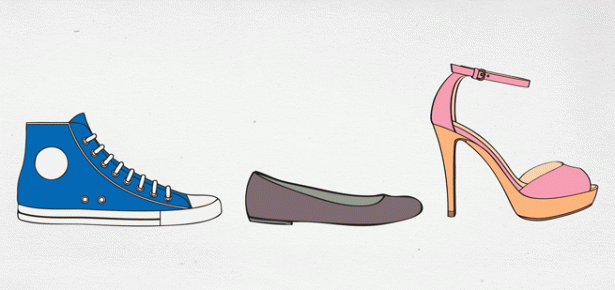
A hoodie. Saggy pants. A shirt with a logo of a sports team or a university. A skirt with a hem above the knees. A tank top.
Many of us expect to be judged by the clothes we wear. If we didn’t, United States consumers would not be spending approximately 200 billion dollars per year on apparel. We would like to be judged fashionable.
But there are other judgments being made. Certain pundits are busy telling us to dress. They proclaim that specific fashions statements signal danger, disrespect, and delinquency. And it is not only pundits. Politicians, prosecutors, and police officers use legal authority to enforce a dress code.
Municipalities across the United States have sought to directly regulate style by criminalizing the wearing of saggy pants, as in a recently passed ordinance for Wildwood, New Jersey’s boardwalk. Cities and towns have also used attire with sports and university logos as an indicia of gang membership, with consequences of exclusion from county fairs or certain neighborhoods, or inclusion on federal, state, and local gang “databases.” More indirectly, saggy pants and presumptive gang attire can serve as a justification of stop and frisk, enhanced sentencing, and exclusion from juries. Additionally, victims of crimes risk being evaluated as provocateurs for wearing a hooded sweatshirt.
Both direct and indirect legal consequences for dress rest upon stereotypes connecting criminality with apparel. Surely we cannot really believe that because someone is wearing a hooded sweatshirt, that means he is about to burgle a house, as was implied in the trial for the killing of Trayvon Martin. Or because someone is wearing saggy pants, he will mug someone on a seaside boardwalk. Or because someone is wearing an Oakland A’s shirt or a Duke University shirt, he is a member of a violent gang.
But these assumptions are more comfortable than the bias they seek to mask. For it is not every single person in a hoodie, in saggy pants, or in an university sweatshirt who merits suspect status. Indeed, the hooded sweatshirt has been around since the 1930s, was arguably popularized by the Rocky movies beginning in 1976 in which a boxer played by white actor Sylvester Stallone wears a hooded sweatshirt, and has been adopted and adapted by skaters, grunge artists, Facebook billionaires, and hip-hop culture. Saggy pants are often argued to have their source in the no-belt prison environment, but as white singer, model, and now actor “Marky” Mark Wahlberg demonstrated in the early 1990s with the Calvin Klein ads, fashionable underwear was meant to be seen, even while wearing pants. Today, it’s rare that underwear for men does not boast at least a waistband that is more than suitable for exposure. And as for clothes with university or pro-team logos, a visit to most colleges or to an NFL football game quickly demonstrates the popularity of these lucrative lines of apparel.
Instead, suspect attire mixes with race, gender, and age into a combustible cocktail targeting young men of color. The most explosive element is the racial one, for focusing on people based upon their race violates our basic understandings of constitutional equality. Current constitutional doctrine of equal protection, however, generally allows a racially disproportionate impact if there is no intent to be racially discriminatory. Enter clothes as convenient camouflage. Or, as one court phrased it, “although the prosecutor may have a bias ‘against people who sag,’” that does not mean the prosecutor’s exclusion of the juror was “based on race.” While less volatile, youth and masculinity should not be underestimated. Elders have been policing younger men’s sexual attire at least since 1463, when the Parliament of Edward IV prohibited Knights who were less than Lords, Esquires, and Gentlemen (and thus usually younger) from wearing of any gown, jacket, or coat, “unless it be of such Length that the same may cover his privy Members and Buttocks.”
The United States has had its own sumptuary laws. The Puritans of Massachusetts Bay prohibited people of “mean condition” from wearing gold or silver lace, or buttons, or “great boots,” or silk scarves. The colonists of South Carolina ordered that slaves should not be permitted to wear fabrics finer than “Negro cloth” or “Scotch plaids.” Our contemporary laws often appear to be apply more generally, but whenever clothing is criminalized, it is a sure sign that inequality is afoot.
We need to reject the profiling of clothes, just as clearly as we strive to reject racial profiling. It should not be a crime, or evidence of a propensity to commit a crime, or an indication that one provoked a crime, to wear a certain fashion. This must be true even if individually, we do not approve of a style or think it looks “gross” or “tacky,” or would never wear it ourselves. We need to recognize that terms such as “thug style” or “gang style” are ludicrous outside of the fashion industry. Such terms do not belong in our courts, in our laws, or in our politics.
Latest Comments
Have your say!